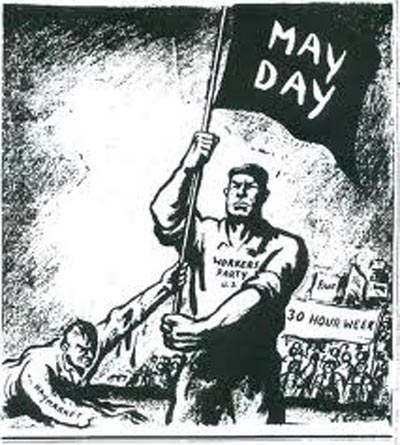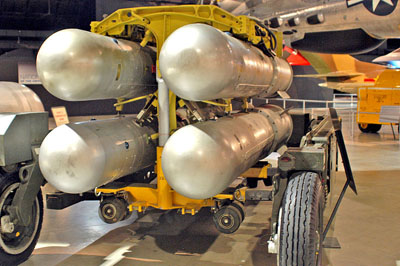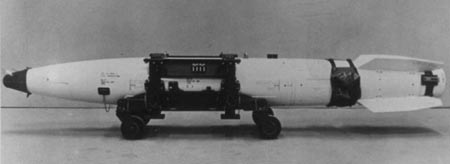Heroes of Labor & Broken Arrows

(The vanguard of the Workers is depicted in this cartoon as carrying on the legacy of those slain in the Haymarket Affair, which was a Chicago labor demonstration that turned violent in the face of a police crackdown on Tuesday May 4, 1886. Anarchists turned the peaceful demonstration supporting the eight-hour work-day into a bomb attack that provoked gunfire by authorities. The blast and firefight resulted in the deaths of seven police officers and at least four civilians; scores of others were wounded. The workers to the rear are demanding the 30-hour work-week, a goal which apparently has been met. Unfortunately, it is the product of large and small business owners seeking to avoid the more onerous provisions of the Affordable Care Act).
It is May Day, the holiday celebrating the triumph of labor and the dignity of all those who toil in the interest of the State. Or something. We don’t do much of that around here, except of course, go to work and be thankful there is an office to go to.
Vlad Putin is bringing back the concept in Russia: he awarded a bunch of “Heroes of Labor” awards, the post-imperial equivalent of those who milked the most cows, or forged the most steel. We have no equivalent here. We just work, and these days consider ourselves lucky to be doing so.
I was going to follow the events of Major Chuck Sweeney’s second combat mission to Nagasaki with some fun-and-games in the new Atomic Age. I may as well do that, since the news this morning is dribbling out more details of where the Boston Bombers were, and who told us about them without apparent response from American Authorities.
The first thing you hear is wrong, of course, so I was going to leave all that alone until things got a little clearer. Instead, having been thinking about The Bomb the last few days, I collected a list of “Broken Arrow” events, from the 1950s forward. The term refers to events in which an atomic device is seriously damaged or lost- and there are more of them than you would think.
I am gratified that the Air Force has two of the Greatest Hits for misplacing nuclear weapons, bookends for the darkest days of the Cold War. I will not dwell on the stranger and most recent one, but here are the simple facts: in 2007, six AGM-129 cruise missiles, each with a “dial a yield” warhead, were mistakenly loaded on a B-52H Stratofortress and the aircraft flew to Barksdale AFB in Louisiana.
Not knowing the Real Deal was on the wings, the weapons were left unaccounted for a day and a half. Heads rolled, or the peacetime equivalent, but that probably was the biggest indicator that the Cold War really was over.
The colder days were much scarier.

(A rack of four B-28 nuclear bombs. Photo USAF.)
In January of 1966, a B-52 Stratofortress had a mid-air collision with a KC-1135 tanker. Four B-28 thermonuclear bombs were onboard.The bomber was attempting its third refueling over the village of Palomares, Spain, when the nozzle of the tanker’s boom struck the Fort and ripped open the fuselage. The ensuing breakup of the bomber caused the tanker’s payload of fuel to go up, killing the crew onboard. The debris was scattered over a hundred square miles, with one B-28 coming to rest with minor damage on land, and another falling into the sea.
The search for that “Broken Arrow” consumed three months and the commitment of 33 Navy ships to the ultimately successful search.
The remaining two bombs had their high explosive cases detonate impact, spreading radioactive material without a fissionable event. 28,000 pounds of contaminated soil were ultimately collected and transported to the United States for safekeeping.
The Air Force is not alone in misplacing weapons of mass destruction. My own beloved Navy has, for sure.
Talking about the misadventures of the B-29 Bockscar on the Nagasaki strike got some of the old stories got my Fleet pals reminiscing about their Vietnam and Cold War days when we slept with the weapons.
Our Pater Familia Vinnie recalled the day in early December when an A-4E Skyhawk attack jet rolled off the deck of the USS Ticonderoga.
That sort of thing used to happen with a sad regularity- carrier aviation is an intrinsically dangerous line of work, and pilot and aircraft were never found. The thing that made this particular tragic loss more memorable was what Vinnie recalled succinctly.
He wrote me back, saying the event happened in World Famous Attack Squadron 56 just a few months before he reported to the ready room in USS Ticonderoga (CV-14).
Vinnie actually wound up taking the lost aviator’s bunk, if you can imagine how spooky that was. The word in “The Champs” ready room was that TICO had been transiting out of the South China Sea when it happened.
“In those days,” he said, “you went thru constant drills for proficiency, particularly after a period on the line off Vietnam. Some of the drills involved mission planning, others involved loading simulated (dummy) weapons, and some involved the actual movement of the real deal escorted by Marines who had absolutely no sense of humor.

(Mk 43 Nuclear bomb in transport carriage. USG photo.)
In this case, the B-43 gravity bomb was actually loaded on the Skyhawk- we called them Scooters- and the aircraft was moved to the elevator to be raised and spotted on the flight deck for simulated launch.
So, Vinnie recalls the old guys saying, “the pilot was in his A4, weapon on, and the ship took a roll in heavy seas. It was deep water there- maybe 14,000 feet deep, and the ship took a roll, and off the elevator and over the side he went. I recall it was open ocean…and very scary…”
As far as anyone knows, the Scooter, pilot and weapon are still down there.
One hopes, anyway.
Copyright 2013 Vic Socotra
www.vicsocotra.com
